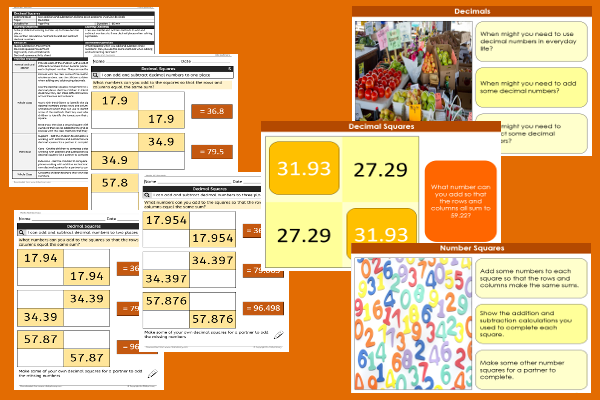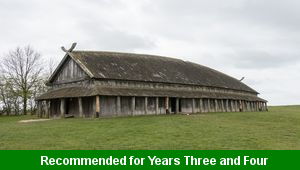Lesson Five – Decimal Squares

This maths teaching pack for Key Stage Two gets the children to practise using addition and subtraction number calculation skills to solve puzzles involving decimal numbers to one, two and three places.
The class can explain and model how to use written calculation methods to identify the matching decimal numbers that can be used to complete each square for the different puzzles.
Download this teaching pack including a lesson plan, classroom activities and an interactive presentation to practise using addition and subtraction number calculation skills to solve puzzles involving decimal numbers to one, two and three places
Activities in this teaching pack include a differentiated set of worksheets to identify and record how to use addition and subtraction number calculation skills to solve puzzles involving decimals to one place for support ability levels, to two places for core ability levels and to three places for extension ability levels.
The interactive presentation gets the children to explore how to use addition and subtraction number calculation skills to solve puzzles involving decimals to one, two and three places.
This lesson is part of a maths scheme of work to get the children to practise using written calculation methods for decomposition to subtract decimal numbers using different real world contexts and abstract number values. There are teaching activities for shared learning, differentiated worksheets to support independent learning and interactive presentations to introduce concepts and key skills.
-

New Start
Explore how to prepare for and deal with some of the new events and special occasions that someone might experience in life
-

Viking Settlement
Explore how the Vikings settled and built communities in Britain in the past by referencing their culture and traditions
-

Changing Seasons
Investigate changes that can happen to the natural world during the four seasons of the year and reflect on similar changes that can occur in people’s lives
-

Chinese Dragons
Select and combine different mouldable and other materials to create masks representing dragons that can be worn during a performance dance
